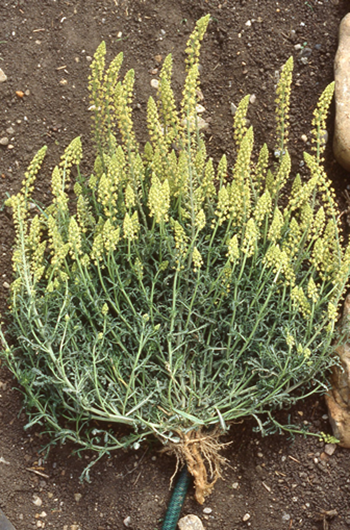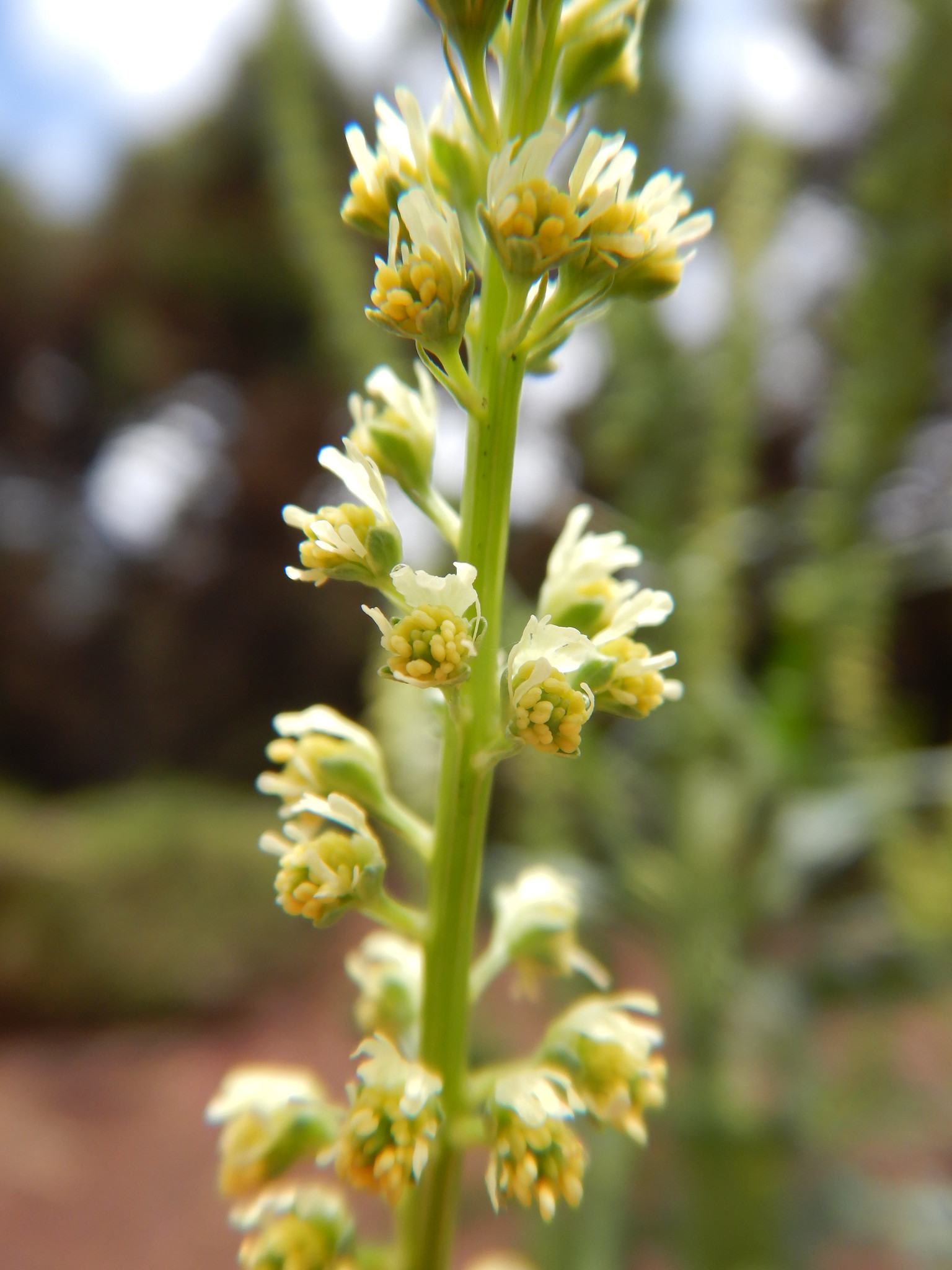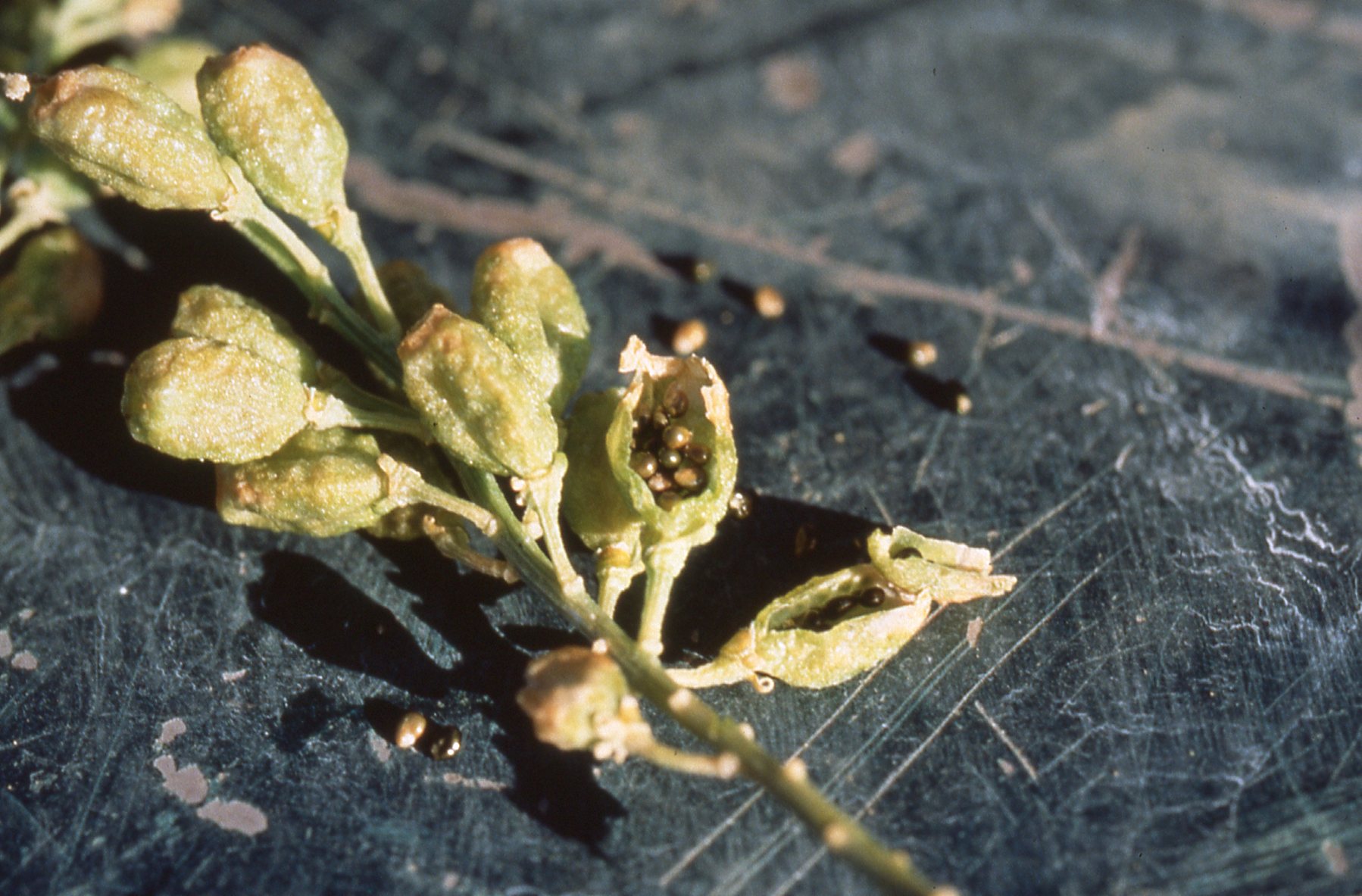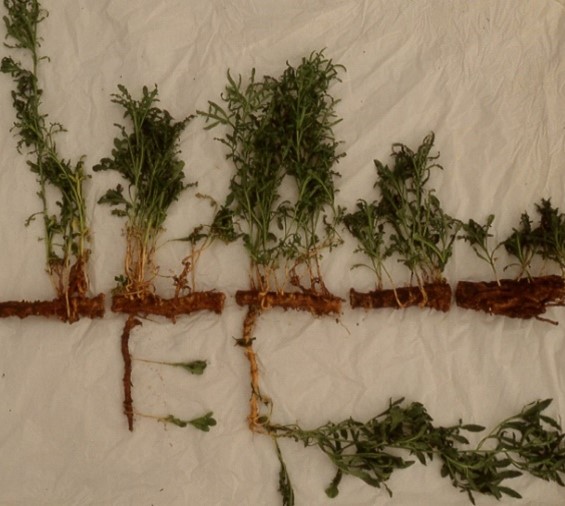Yellow Mignonette (Reseda lutea)
Compiled by Katie Hatlelid, MSU Extension Judith Basin County, Email Katie Hatlelid
Introduction

Yellow mignonette has a tap root and creeping roots. The tap root of a plant in Australia grew to a depth of over 12 feet. Photo by Dave Wichman.
Yellow mignonette is a broadleaf, perennial weed that is native to Asia Minor and the Mediterranean Basin. It is widely recognized in Australia as a troublesome noxious weed in cropland. It is a problem in cropland and pastures due to high seed output, a large creeping root system, the ability to thrive under disturbed conditions, and potentially high nitrate levels. Yellow mignonette was first identified in Montana in 1958 but wasn’t recognized as a problem until 1990, specifically in Central Montana where it spread quickly along gravel road shoulders, grain fields, and alfalfa pastures.
Identification and Biology

Photo by Matt Lavin, Flickr.
Yellow mignonette is a 1-2 ft tall biennial or short-lived perennial, usually diffusely branched. Basal leaves are mostly three-lobed while leaves along the stem are three- to seven-lobed. Flowering occurs

Photo by Katie Hatlelid.
from June through September. Flowers have five, sometimes six, yellowish petals. Each flower has 15 to 25 stamens. Seeds are pear-shaped, black, smooth, and shiny. The seeds are contained within capsules that each produce about 14 to 24 seeds. Seed production averages 14,000 seeds/plant but can be as high as 220,000 seeds/plant. Seeds germinate in early spring with some germination in the fall. Mature seeds remain in capsules until dispersed by physical disturbance.
Habitat and Spread
Seed germination and seedling establishment occurs readily in disturbed sites such as roadsides, fallow ground, and gravel piles. Yellow mignonette reproduces by seed and vegetative root buds. Vegetative buds are numerous on the crown and primary and secondary roots. Severed crowns and roots in fallow fields re-establish following tillage.

Photo by Dave Wichman.
Management
Control of yellow mignonette is a long-term commitment. Cultivation only spreads the plant to new areas and pulling is only effective if the whole root is removed. Any leftover root material will regenerate. Herbicides can also be effective, but applications must be repeated throughout the growing season and for several years to exhaust the extensive root reserves. Herbicide active ingredients found to be effective include metsulfuron, metsulfuron with 2,4-D, dicamba, glyphosate (non-selective), and picloram. Not all herbicides are approved for use in all locations, so careful selection of products is important. When using herbicides, always read and follow product labels.
Further Information
For more information about this month's weed post, contact Extension Invasive Plant Specialist Jane Mangold. Past posts are available in the Monthly Weed Post Directory.
This weed post is also available as a printable PDF (705 KB).
